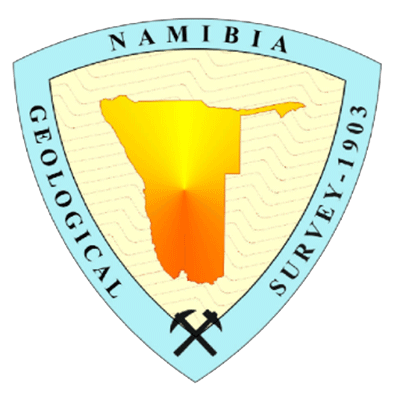A primary cause for aridity in the Atacama Desert is its location at the eastern boundary of the subtropical Pacific. In that region, large-scale atmospheric subsidence produces dry, stable conditions and maintains a surface anticyclone over the southeast Pacific that hinders the arrival of mid-latitude disturbances (Takahashi and Battisti, 2007). The subtropical anticyclone drives equator-ward winds along the coast that, in turn, foster the transport of cold waters from higher latitudes (i.e. the Humboldt or Chile-Peru surface current). The upwelling cold Humboldt Current inhibits the moisture capacity of onshore winds by creating a persistent inversion that traps any Pacific moisture below ~1000 m above sea level (Houston, 2006a; Rutllant et al., 2013) and leads to the formation of a persistent deck of stratus clouds (Cereceda et al., 2008a; Rutllant et al., 2003; Takahashi and Battisti, 2007). These factors result in a marked regional cooling of the lower troposphere that is compensated by enhanced subsidence along the Atacama coast (Takahashi and Battisti, 2007) further drying this area. Finally, the pronounced rain shadow effect of the Andes to the East effectively inhibits moisture transport from the East (Houston and Hartley, 2003; Rech et al., 2010; Takahashi and Battisti, 2007). The high evaporation potential in most sections of the Atacama (Houston, 2006a) provides the finishing touch to the hyperarid conditions.
Increased precipitation tends to occur throughout the Precordillera and Altiplano when strong upper level easterly winds enhance moisture transport from Amazonia during austral summer (December to February) (Garreaud et al., 2003; Garreaud et al., 2009). As a consequence of the easterly moisture source, a rain shadow develops over the Precordillera and Atacama Desert. The mean annual precipitation declines rapidly from over 300 mm per year at 5000 m to less than 20 mm per year at 2300 m (Houston and Hartley, 2003). Below 2300 m, associated with the Central Depression and the Coastal Cordillera, is a zone of extreme hyper-aridity in which the mean annual precipitation is less than 2 mm per year (Houston 2006b; Fig. 1). Winter rainfall is largely sourced from northerly and easterly moving frontal systems originating from the Pacific (Vuille and Ammann, 1997). While the general patterns are known, observational data is spatially very patchy (Houston, 2006b). The precipitation data for the driest region (<5 mm per year), covering a region of approximately 120.000 km2, relies on five stations only (Houston, 2006b), three of which are along the coast (Antofagasta, Iquique, Arica), none of which are in the Coastal Cordillera.
Consistent with the nearly fixed latitudinal position of the South American continent during the last 150 Ma (Hartley et al., 2005a) and the existence of the Humboldt current since the establishment of the Antarctic Circumpolar Current after ~50 Ma due to the opening of the Drake passage (Cristini et al., 2012; Lagabrielle et al., 2009; Scher and Martin, 2006), it is likely that arid/semiarid conditions have prevailed over the Atacama region at least since the early Oligocene (Dunai et al., 2005; Hartley, 2003) and potentially since the late Cretaceous (Hartley et al., 2005a). The onset and permanency of the hyperarid conditions and its regional extend, however, is a matter of controversy. Geological evidence has been used to support arguments for late Pliocene to Early Miocene onset of predominantly hyperarid conditions (Amundson et al., 2012a; Dunai et al., 2005; Evenstar et al., 2009; Gaupp et al., 1999; Hartley, 2003; Hartley and Chong, 2002; Hartley et al., 2005a; Jungers et al., 2013; Kirk-Lawlor et al., 2013; Placzek et al., 2010; Rech et al., 2006; Sáez et al., 2012; Wörner et al., 2002). The wide range of geological ages proposed for this onset is partially due to the different proxies used (i.e. their sensitivity to climate), the records’ resolution, and the location (near coastal sites vs. Andean foothills, the geographic spread of data covers 6 degrees of latitude, Fig. 1). The difficulty in resolving this key issue utilizing physics-based climate modelling is in part because of the uncertainty of the timing of the uplift of the Andes (Barnes et al., 2012; Ehlers and Poulsen, 2009; Garzione et al., 2008; Insel et al., 2012; Mulch et al., 2010; Poulsen et al., 2010; Rech et al., 2006) and the contested significance of the rain shadow effect for hyper aridity in the Atacama (Garreaud et al., 2010; Lamb and Davis, 2003).
For shorter time-scale, i.e. the late Pleistocene to Holocene there is a consensus that the size of the area with hyperarid conditions fluctuated. During glacial periods Pacific frontal systems migrate 150 – 200 km further northward than during interglacial periods (Lamy et al., 1998; Lamy et al., 2000; Rojas et al., 2009; Stuut and Lamy, 2004), creating wetter conditions in southern areas (>23ºS) that are presently hyperarid (Díaz et al., 2012; Maldonado et al., 2005; Quade et al., 2008). Also the Andean foothills received more runoff from the Precordillera during the latest glacial (Betancourt et al., 2000; Bobst et al., 2001; Gayo et al., 2012a; Gayo et al., 2012b; Latorre et al., 2013).
Generally, publications on the paleoclimate of the Atacama (i.e. those cited above) tend to generalize local findings (e.g. evidence for a wetter period) to be valid for the entire Atacama Desert, ignoring present day climatic gradients (Fig. 1), while it would be cautious to assume that such gradients existed in the past as well.
Due to the scarcity of observational data (modern data and continuous paleoclimate proxy records) regional climate models that are specific to the Atacama, and which could help resolving the apparent discrepancy of paleoclimatic indicators, are essentially untested.

























